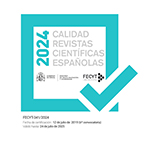Between Astronomy and Everyday Language
Abstract
The aim of this article is to explore the process of a two-way linguistic transfer that is to be found between the field -specific lexicon related to astronomy and more commonplace, everyday language. The history of this discipline and its subsequent evolut ion in both imagery and nomenclature help to make it a field of particular interest for this kind of studies. Astronomy is a field that has changed radically in the last century and a major reformulation of its nomenclature has been part of this change. Upon analysis of these changes, suggestive forms of “d ialogue” between past and present and also between scientific and everyday language are observed. This paper addresses this two-way linguistic flow. Part icular attention will be given to the following: well-known terms such as nebulosa and galassia; the variety of uses of the combining forms cosmo- and astro-; nouns such as bolide, apogeo, satellite and lastly, popular sayings based on ancient traditions related to the sky. This work investigates these aspects and shows how these words, maintaining their forms, continuously expand or reduce their semantic values thus reflecting changes in culture and use.Downloads
Article download
License
In order to support the global exchange of knowledge, the journal Cuadernos de Filología Italiana is allowing unrestricted access to its content as from its publication in this electronic edition, and as such it is an open-access journal. The originals published in this journal are the property of the Complutense University of Madrid and any reproduction thereof in full or in part must cite the source. All content is distributed under a Creative Commons Attribution 4.0 use and distribution licence (CC BY 4.0). This circumstance must be expressly stated in these terms where necessary. You can view the summary and the complete legal text of the licence.










